Why Madonna is ‘my spirit guide’

She’s the biggest-selling female recording artist of all time, a woman who’s made an indelible mark on our culture, and contributed to lasting social change. But, for a long time, Madonna sustained public interest by refusing to look back on her career, insisting on maintaining a focus on present and future projects. Now – finally – she’s ready to celebrate her cultural legacy. And, perhaps most importantly, to show her vulnerability.
More like this:
– The most influential hip-hop tracks
– The best pop star of her generation?
– The riot that ‘killed’ disco
I watched, transfixed, as Madonna performed Open Your Heart. Wearing a bustier, fishnets, and writhing around a chair, she reprised her role as a dancer from the famous 1986 video, in which she danced for an audience of gay men and a lesbian drag king. On stage she danced with gender-nonconforming performers.
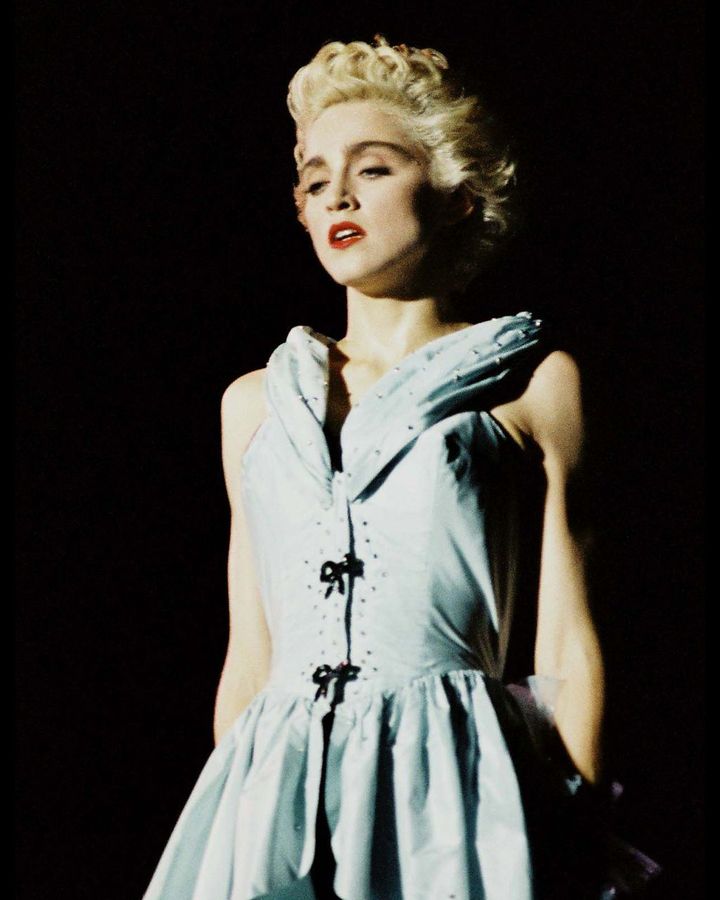
Writer Matt Cain first saw Madonna live in 1987 when he was aged 12 – it was a formative experience (Credit: Getty Images)
It’s a key moment in Madonna’s Celebration tour, a sumptuous, emotive and self-referential show that not only celebrates Madonna’s cultural legacy but proves that her fire is still burning, her drive is undimmed, and her rebel heart is still beating.
I saw the show in London’s O2 Arena on Sunday night, but it took me back to Roundhay Park, Leeds, when Open Your Heart was the opening number in Madonna’s first ever world tour, in 1987. Twelve years old, I was in the audience, a bullied gay kid struggling to find his place in the world. But I felt emboldened by the energy and attitude of the invincible warrior on stage. This was only bolstered when I saw the Blond Ambition tour in 1990, when Madonna’s costumes resembled armour, and her signature look of steely defiance reached its zenith.
Madonna saved my life. She inspired me to follow my own creative dream, drawing on my experiences in my debut novel The Madonna of Bolton. It’s about a boy growing up in the 1980s who clings on to Madonna to help him survive the trauma of growing up gay – but who then needs to let go of his obsession in order to find his own voice as a writer.
Changing role
But the past 10 years have been a difficult time to be a Madonna fan. There were signs that my spirit guide was struggling to accept her changing role in the cultural landscape. When she announced her new show, I – like many fans – invested a lot of hope and emotion. And Madonna has delivered a dazzling show that succeeds on the level of spectacle, stagecraft, reflection and political bite.
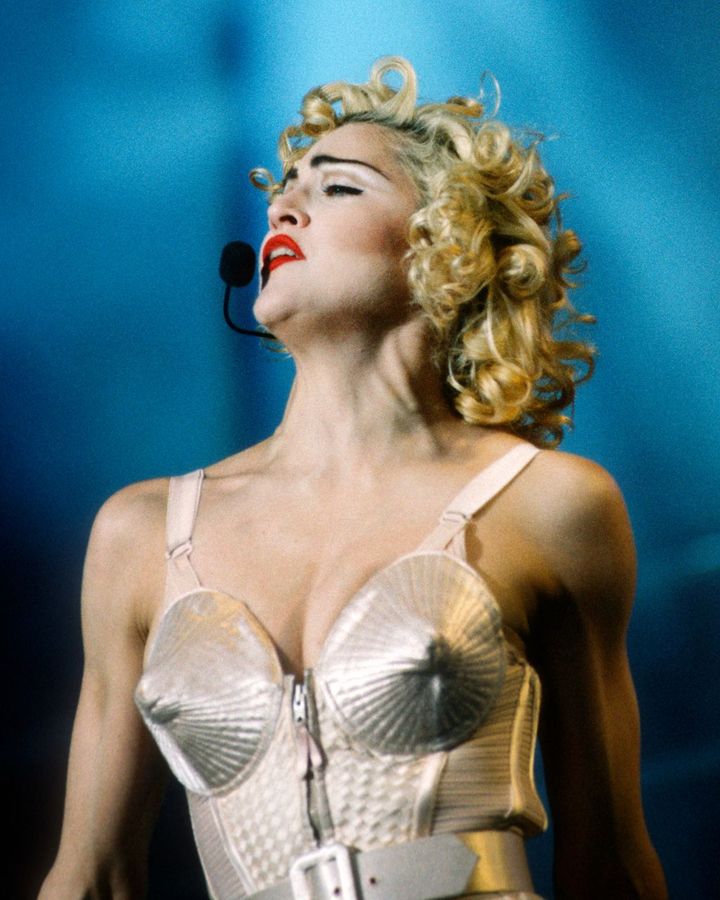
With the 1990 tour Blond Ambition, Madonna reinvented the traditional notion of the concert tour (Credit: Getty Images)
It opens with Nothing Really Matters, a song saying that love – and motherhood – are more important than fame. There are no distracting theatrics, just Madonna, her image and her voice – which has never sounded better. She’s beautifully lit, raised on an altar and wearing a crown, offered up to the audience as a goddess. After that, the crown comes off. Madonna appears more human – and more vulnerable – than ever before.
On past tours, she moved with machine-like precision, showcasing her stamina and athleticism, never deviating from the show as rehearsed. In this show, her vulnerability could only ever be front and centre. In June, the opening North American leg of the Celebration tour was postponed when she was hospitalised with a serious bacterial infection – a brush with death that seems to have had a profound impact on her. On opening night, she commented that “the angels were protecting me”. During an acoustic cover of Gloria Gaynor’s I Will Survive, she paused after the line “Did you think I’d lay down and die?” to ask the audience, “Well, did you?”
And who can forget her famous fall on stage at the Brits in 2015? She may have picked herself up, made it through the number, and ended with a triumphant fist in the air, but no-one would ever see her as invincible again.
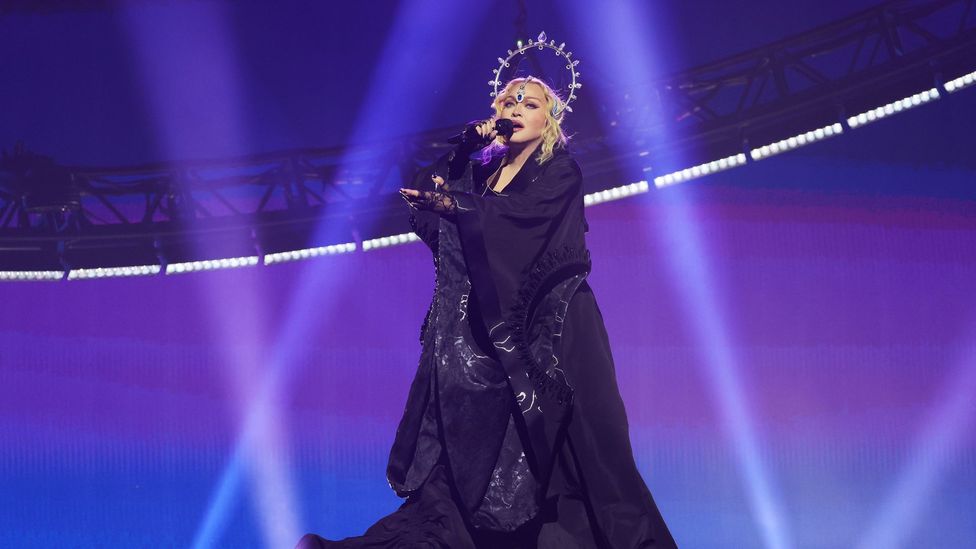
On the new Celebration tour, Madonna opens with a heartfelt rendition of Nothing Really Matters (Credit: Getty Images)
At the age of 65, Madonna still moves – more than artists half her age – but within a limited repertoire. In the show I saw, she wore a bandage on her knee, and at one point had to stop singing when she had a coughing fit.
But what we lost in choreography, we gained in fun. Gone was the steely defiance, replaced by smiles and even laughter. In between numbers, Madonna was chatty and reflective, discussing her struggle as an artist but also her love for her children – several of whom joined her on stage. And it was great to see a warmth towards her fans coming from a star who’s so often had to switch into warrior mode that she’s sometimes come across as abrasive. After brutalising experiences at the hands of the press and the patriarchy – many of which are documented in this show – her barriers went up. Now she was basking in the audience’s love.
And this show has much more of a narrative than past ones, beginning with her move to New York in 1978, it told the story of her life and career through music, dance, design and social activism.
Past glories
Her costumes nodded to past glories, and replicas of her classic costumes were worn by dancers playing her younger self. These imitators sometimes interacted with Madonna – at one point one of them on the same red velvet bed performing in the infamous masturbation scene in Blond Ambition.
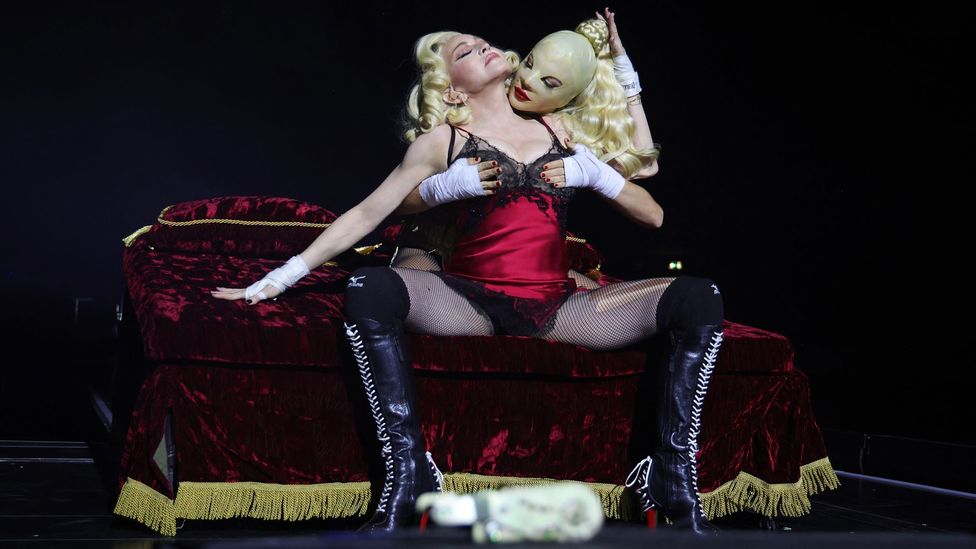
The current tour references past glories, with dancers performing as Madonna’s younger self (Credit: Getty Images)
There was a sharp focus on her social activism in the show, such as her support for gay men in the 1980s. Live to Tell was performed in memory of all the men lost to Aids, beginning with her close friends, the dance teacher who inspired her to be an artist, and so many of her collaborators.
But Madonna’s greatest contribution to society has to be fighting against the double standard that allowed men to express their sexual desires but forbade women to do so. And it is a treat to hear songs like Erotica, Justify My Love and Bad Girl, and see her reclaiming that chapter of her career from the early 90s, when she became the most vilified woman in the world.
The boxers from the 1993 Girlie Show tour reappeared to remind us why she became a fighter. Perhaps the strongest political point she can make now is about ageism. Her messaging on this front hasn’t always been clear enough to hit home; not so here. An interlude revisits a speech she made in 2016, proclaiming “The most controversial thing I have ever done is to stick around”.
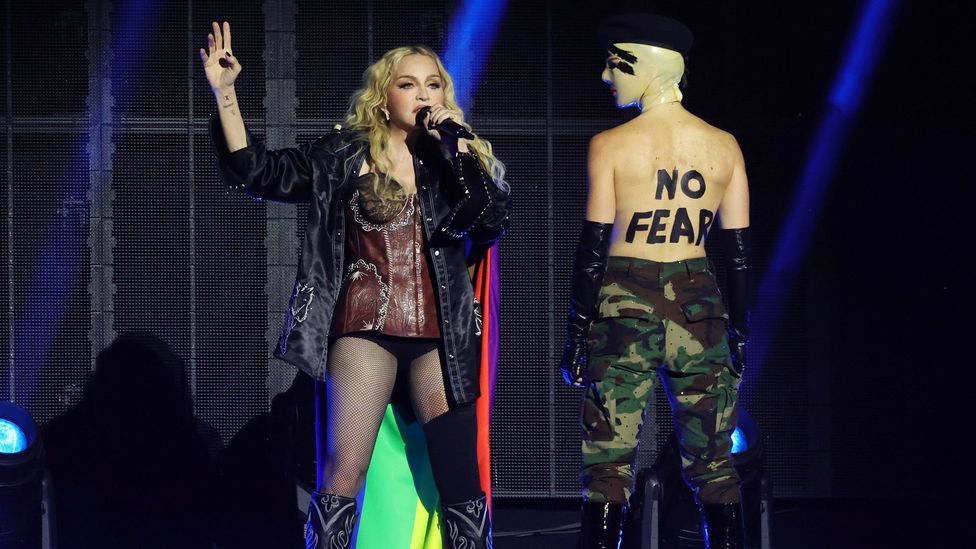
Madonna has, it seems, reached the point where she is unafraid to show her vulnerability (Credit: Getty Images)
Ultimately, though, the most important component of the show could only ever be the music. For the first time on a Madonna tour, there was no live band – according to musical director Stuart Price, this is to let the original recordings shine. But this is Madonna. She doesn’t play by the rules. And – following the collapse of her self-directed biopic just before the Celebration tour was conceived – she was clearly determined to tell her story, her way. But maybe we all have our own Madonna: we all see her as representing something different, based on what we wanted or needed when we first encountered her work.
That 12-year-old boy could never have imagined the journey Madonna’s career would follow for the next few decades. As a man, I can’t imagine where it will take her next. But now that she’s been brave enough to show her vulnerability, I’m excited to find out.
The Madonna of Bolton by Matt Cain is published by Unbound.
If you liked this story, sign up for the weekly bbc.com features newsletter, called The Essential List. A handpicked selection of stories from BBC Future, Culture, Worklife and Travel, delivered to your inbox every Friday.
If you would like to comment on this story or anything else you have seen on BBC Culture, head over to our Facebook page or message us on Twitter.








